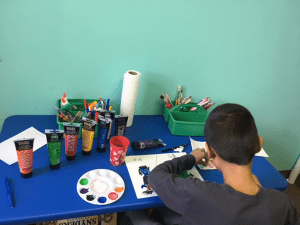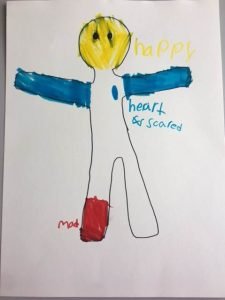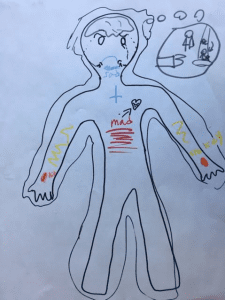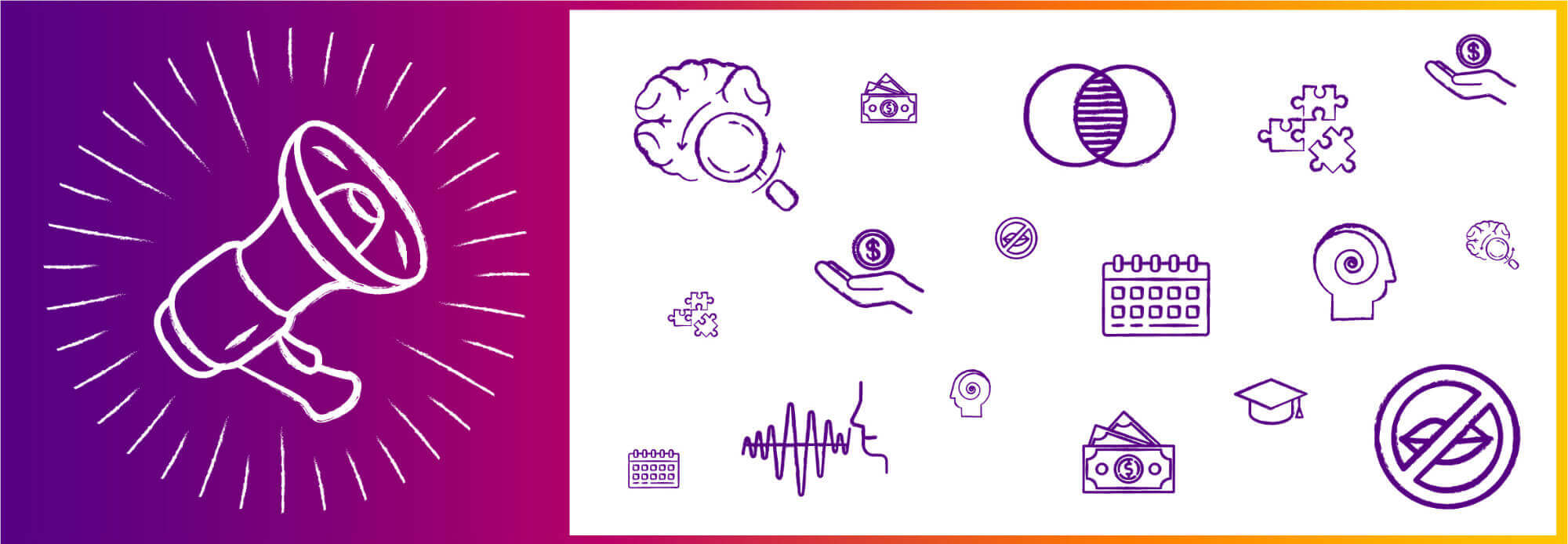“We don’t even need words, we go straight to where the memory is stored.”

This is how REACH’s Child and Adolescent Therapist, Catalina, describes the work she does through art therapy with children. The Art Therapy Alliance defines art therapy as “the deliberate use of art-making to address psychological and emotional needs, facilitated by an Art Therapist. Art therapy uses art media and the creative process to help in areas such as, but not limited to: fostering self-expression, create coping skills, manage stress, and strengthen sense of self. Art therapy has provided mental health treatment for clients who have experienced trauma, grief and loss, depression, chronic illness, substance abuse, and more.”
REACH has been providing therapy to children and teens affected by domestic violence for many years now. We have discussed before how therapy can address issues like attachment, and how our therapist can be a resource for parents as well. Since Catalina has joined the REACH team, we have been able to add her specialty in art therapy to the list of services we provide for kids. This is especially helpful because often, children who have experienced trauma (such as being abused or witnessing violence in the home) find it difficult to discuss what happened out loud. This could be because they have limited language capacity, or because of the shame and stigma that surrounds domestic violence in society as a whole. It could be more biological in nature. Catalina explains that the part of their brain that gets activated in a traumatic situation is the brain stem (the primitive part of the brain which houses the ‘fight or flight’ response). The cortex, where decision making happens, can remain under-activated or under-developed.
 As a result, even if the child was pre-verbal when the abuse took place, their brain development is still affected. We see things like aggressive behaviors, acting up at home, not functioning well in school, and trouble sleeping. Art therapy can reach areas of the brain because that doesn’t require words. It’s a familiar, welcoming environment where a child feels comfortable – they are surrounded by toys, art supplies, play dough – all of the thing that make for an inviting space. By focusing on an activity or a story with animals or characters , we encourage self-exploration and get to know the child. Often Catalina starts out by sharing a story like A Terrible Thing Happened, which talks about a raccoon who witnessed something bad, and has trouble putting it out of his mind.
As a result, even if the child was pre-verbal when the abuse took place, their brain development is still affected. We see things like aggressive behaviors, acting up at home, not functioning well in school, and trouble sleeping. Art therapy can reach areas of the brain because that doesn’t require words. It’s a familiar, welcoming environment where a child feels comfortable – they are surrounded by toys, art supplies, play dough – all of the thing that make for an inviting space. By focusing on an activity or a story with animals or characters , we encourage self-exploration and get to know the child. Often Catalina starts out by sharing a story like A Terrible Thing Happened, which talks about a raccoon who witnessed something bad, and has trouble putting it out of his mind.
Drawing their feelings can help children with what we adults might call “self-regulation,” that is, labeling their feelings, being aware of what’s happening in their body, knowing when they’re seeking certain sensations or when sensations are becoming too much, grounding techniques, and mindfulness. In some cases  we help them expand their emotional vocabulary around feelings, so they can express more than ‘angry,’ ‘sad,’ or ‘scared’ – also things like ‘frustrated’, ‘ashamed,’ or ‘confused.’ Recognizing and processing the feelings they’re having is the first step to then being able to cope with them. We might work with a child by saying, “how can you calm down your body, if you’re afraid of something, what could you do to feel safe? Who can you ask for help?” Being able to label or draw things on paper can be a first step to these broader conversations.
we help them expand their emotional vocabulary around feelings, so they can express more than ‘angry,’ ‘sad,’ or ‘scared’ – also things like ‘frustrated’, ‘ashamed,’ or ‘confused.’ Recognizing and processing the feelings they’re having is the first step to then being able to cope with them. We might work with a child by saying, “how can you calm down your body, if you’re afraid of something, what could you do to feel safe? Who can you ask for help?” Being able to label or draw things on paper can be a first step to these broader conversations.
Over time, building off of things like the story of the raccoon, we can integrate story telling into their therapy. So much of what has happened to these kids in their young lives has been out of their control. Therapy can help them to make decisions and solve problems. “Using art therapy and narrative therapy, they get to tell their story,” says Catalina. “They get to write the end. They get some control and power over what happens to them.”
This is the first in a series of blog posts to introduce the “Survivor Plate” for this year’s Reach for the Stars Gala. Each year, among the artist-created plates we auction off, are pieces made by survivors themselves. This year’s plate was painted by a young boy in our Child and Adolescent Therapy Program, as part of his art therapy with Catalina. Next month we will introduce you to a very special REACH volunteer who helps make each gala an artistic feat, and then in September we will tell you as much as we safely can about the young artist himself, and his work. Stay tuned for more!





